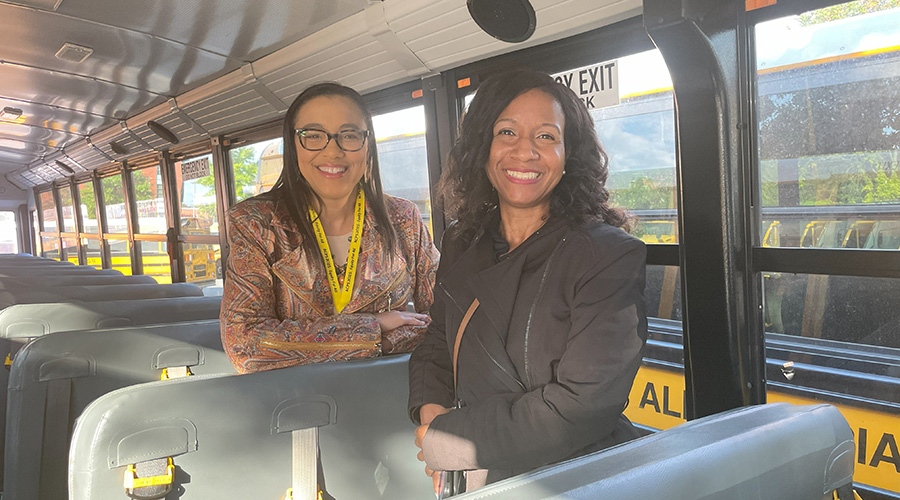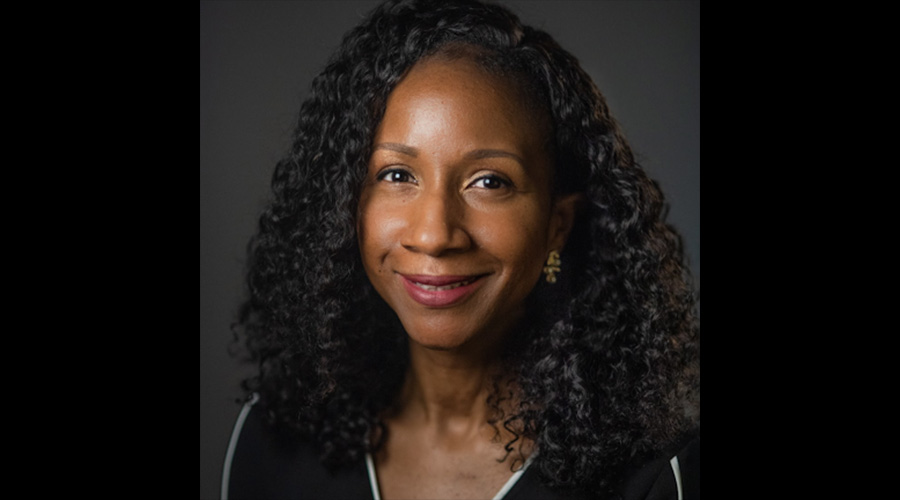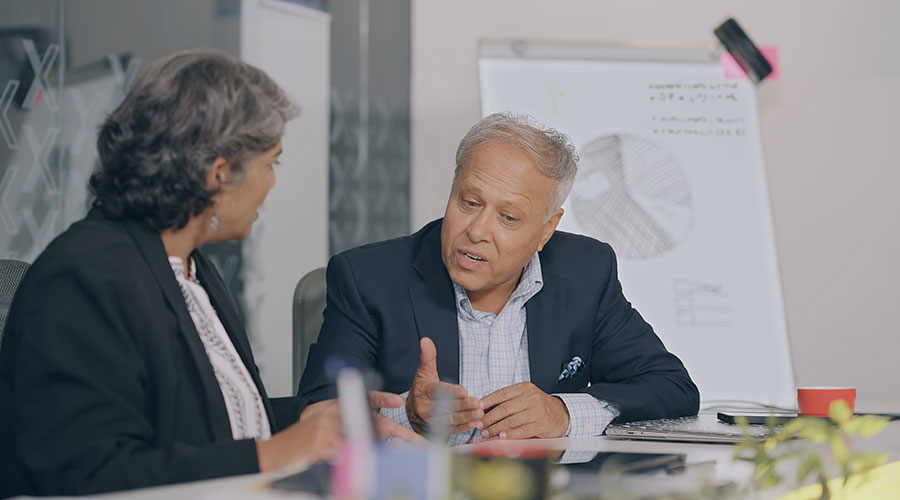Dr. Alicia Hart Leads Operations at Virginia K-12 School District
Dr. Alicia Hart turns facility operations into student success at Alexandria City Public Schools
By Dave Lubach, Executive Editor
Alicia Hart is not the first executive to unintentionally find her way into the facility management profession.
One of the first jobs she applied for out of college was for an account manager position at a manufacturing plant. She was under the impression the job would focus on money matters like budgeting and financing. As she continued to interview for the position, she realized it was something else entirely.
“It was to manage their custodial staff, their general labor and their security accounts,” says Hart, the chief operating officer at Alexandria City Public Schools in Virginia. “That’s what started my career in facilities and operations.”
Twenty years later, it’s clear that Hart — now Dr. Hart since obtaining her doctorate in 2016 — certainly embraced all the other responsibilities facility executives handle daily. And that first job set her on a path to where she wanted to be all along — working in education.
Helping youth has always been a motivator for Hart, but she knew a career in teaching wasn’t a fit for her. Instead, she looked at other ways to help students and eventually peers, reach their potential in life and their careers.
“Teaching was not the path I wanted to take, so the facilities and operations realm allowed me to support students and use my skillset to support school divisions on the operations side of things behind the scenes,” she says. “I loved the fact that I was able to use what I love to do in terms of my professional career and be able to give back to students across the board.”
A home in education
Hart’s career included stops in the public sector and municipalities, as well as seven years in facilities at another Virginia school district, before landing at Alexandria City Public Schools as the director of educational facilities in 2019, then ascending to her current position in 2022.
She oversees 350 employees in departments such as capital improvements, maintenance and custodial services, transportation, nutrition services and safety and security. Alexandria City is a diverse district with 18 schools and serves 16,300 students located in a suburb of Washington, D.C.
The buffet of responsibilities fits perfectly with Hart’s vision of what the educational experience for students should be.
“I’ve always believed in creating an experience that empowers students because I know their journey to learning begins the moment they leave home,” she says. “The bus ride, the cafeteria, the building itself — they all matter. When students are excited to walk through those doors each day, their capacity to learn is transformed, with lasting impacts on their adult lives.”
To help create better learning environments for the kids, the district is embracing sustainability. From green and net-zero building projects to its 15 electric school buses, Hart and her team demonstrate to students the impact the facility can have on its students, both now and in the future.
For example, Alexandria City Public Schools is promoting sustainability is at the district’s newest building, a high school with a learning wall that explains to students the school’s sustainability initiatives, which include a geothermal system and a greenhouse at the school.
“We’re now allowing the opportunity to teach students about the facilities work and the things that we do and tie it into the sustainability front,” Hart says. “I would say, for me, that’s probably been the biggest trend change over the last few years, is understanding that we need to build buildings that not only meet your educational specifications, but will last, because that ultimately has an impact on how you plan for things.”
Not only do these initiatives help current and future students learn about sustainability, but Hart also hopes that at least some of those students walking the hallways will develop the same vision that she had — one that led her to embark on a career that can make a difference in the lives of others.
“Developing talent is going to be extremely important within the facilities and operations field,” she says. “Truly understanding the trend, especially as it relates to sustainability, is going to be huge moving forward. ... Continuing that trend starting in high school, building on that in college, and then when they’re coming out of college, having careers ready for them, I think, is extremely important for this next generation of facilities.”
Embracing facility improvements often means making tough budgeting decisions. Dominic Turner, the district’s chief financial officer, works closely with Hart on capital improvement and operating budgets while trying to balance the deferred maintenance needs. He says they have a good working relationship to ensure that financial decisions are made with everyone’s best interests in mind.
“Alicia has a lot of background in understanding how the budget works, and that’s awesome when you’re dealing with someone that controls the largest non-school budget in your school division,” says Turner.
One of the first budgets Turner and Hart worked on together in the district was to address a backlog of deferred maintenance.
“We really had to work on a plan on how we were going to fund that, and some of those projects and some of those items both came out of the capital side and operating side,” Turner says. “That was probably her first big challenge when she came here, and she’s done a great job to get out of that. Now we’re working to not get back into the same position.”
Advocating for others
With so many roles to juggle and departments to lead, Hart relies on other managers to help with day-to-day duties. One of those managers is Ayanna Harrison, the district’s executive director of support operations who is also serving as the interim executive director of facilities. Harrison has been with the district for almost a year and speaks with Hart many times daily about what’s going on in their department.

Harrison says one of Hart’s greatest strengths is her ability to assess situations and break them down in practical and no-nonsense ways.
“She has a very analytical mind,” Harrison says of Hart. “She asks a lot of questions to get to whatever it is that she needs. She just doesn’t function like the chief of operations that she is. I know I do a lot of the day-to-day, but when she needs to do the day-to-day, she will go to the staff, ride the bus, show up at a school and put her hard hat on. She will do all of the things. She will go out in the field to support her team, and she also advocates for her team.”
Hart’s interest in helping others succeed goes beyond the district’s students. As a person of color, Hart remembers a time during her career when she was the only woman, especially a Black woman, who was in the room making important facility decisions.
“If you are someone who loves project management and just solving those kinds of day-to-day problems, I think facilities and operations is a wonderful profession to undertake,” she says. “Unfortunately, at the time that I was in high school and looking at careers, it wasn’t really something that was highlighted as an avenue for me to take. I’m so glad I found my way into this profession, and I use my platform to be able to highlight this industry for all, and specifically for those historically marginalized.”
One woman who is inspired by Hart is Harrison, also an Black woman with a career in facilities management.
“She has brought her seat to the table and created opportunities for others to sit at that table, build their own tables, and build their own seats,” Harrison says of Hart. “She is a brilliant woman, excellent at what she does and is so supportive of me and others’ growth. It is very inspiring, and I am appreciative to have someone who is willing to pass on the knowledge and connections to stay on a trajectory of growth in this space.”
As Hart’s career has evolved, she has become a trusted source for facility executives from all walks of life. She regularly attends facility management conferences and has served as a panelist and a regular contributor in group discussions — a trait that makes her a popular resource at trade shows.
“I’m one that really doesn’t have a fear of talking about issues that I’m sure are impacting all of us,” she says. “That kind of starts the conversation going from there. I’ve really been seeing more people from all walks of life that come up to me and want to talk about my experiences and things that I’m doing here and have done in a previous job, which is welcome, because I do feel it helps build a stronger networking system for us here in facilities management.”
Dave Lubach is the executive editor for the facilities market. He has a decade of experience writing about facility management and maintenance issues.
Related Topics:













